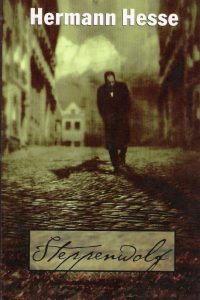
 Literature Guides
Literature Guides
Key Facts about Steppenwolf
Key Facts
First published in Germany in 1927 and translated into English in 1929, Herman Hesse’s Steppenwolf has endured a fairly harsh mix of critical receptions. First criticized as immoral for its open depictions of sex and drug use, these judgements eased as cultural norms began to change by the 1960s. Later critics criticized the novel for being too pessimistic and for portraying a nearly psychotic perception of reality. This latter was never denied by Hesse himself.
Of particular interest to critics and readers alike is the role of Hermine. Many have argued that Hermine is never a real person in the novel, that she is a figment of the imagination of Harry Haller. Even when Harry asks what her name is, she turns the question around. Some have argued that she is a part of Harry’s own personality that has broken off and become real to him until the end when he finds some aspects of his deeper self. At which point, he kills her. Even in death, Hermine is never actually gone.
By the 1960s, Steppenwolf began to take on meaning for the counter-culture movements. The novel inspired the name of a famous rock and roll band and it finds its way into numerous other rock and roll lyrics.
Several theater companies were founded which took their names form the Magic Theater in the novel. One of the most famous of these is the Steppenwolf Theater Company in Chicago, founded in 1974 by actors Terry Kinney, Jeff Perry, and Gary Sinise.
In 1974, a film adaptation was released starring Max von Sydow and Dominique Sanda. Written and directed by Fred Haines.
In 1928, Hesse published something of a companion piece to the novel: “Harry, the Steppenwolf.” In this short story, a wolf is kept in a zoo who entertains people by destroying images of famous cultural icons like Goethe and Mozart.



